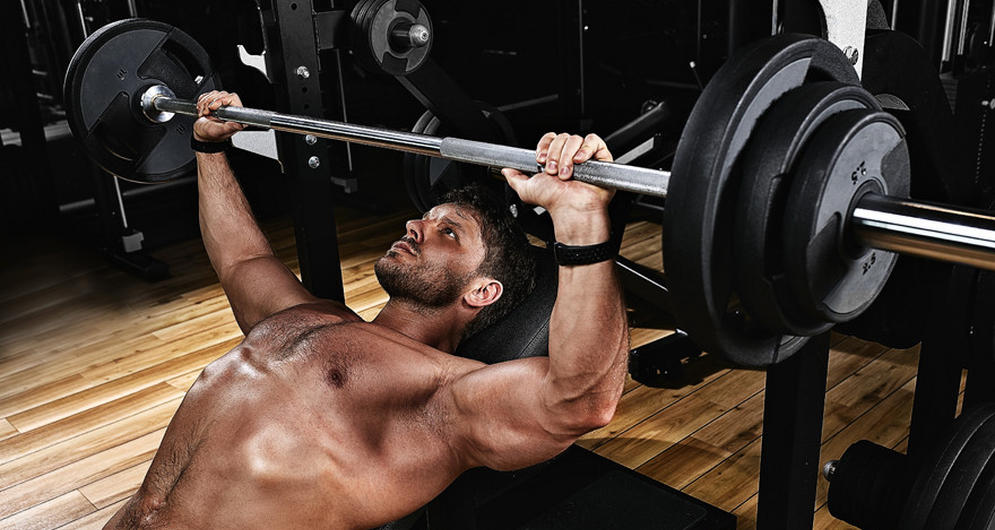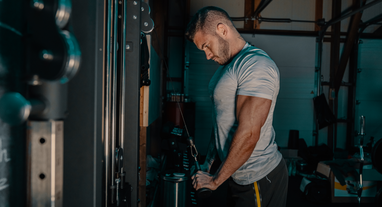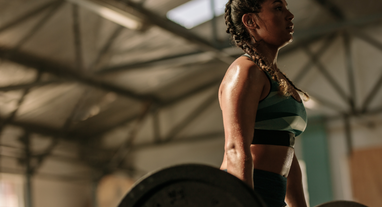5 tips for a better bench press

"How much do you bench?" is perhaps the most frequently asked question you get when people know that you can be found at the gym on a regular basis. In this blog, we will discuss 5 tips so that you can improve your bench press and proudly answer that question!
1. Correct technique for bodybuilders
Correct technique is the foundation. Without proper technique you will never get the most out of the exercise and you will eventually suffer from injuries. A spotter is also recommended at all times during the bench press because he can help you to make just that one extra repetition or to intervene when necessary.
When bench pressing, it is important that you keep the elbows to your side. When you bring the elbows outwards, there is a lot of pressure on the shoulder muscles, resulting in injuries over time. In addition, you engage the chest muscles better and you create a greater muscle stimulus when you keep the elbows to your side.
The placement of the feet are also important. Make sure to keep your feet on the ground throughout the movement. When it gets heavy, people tend to swing with their legs. This will not help to bring the weight up. In fact, this will also cause injuries as you make uncontrolled movements with almost your entire body.
Your back and buttocks must also remain in contact with the bench throughout the exercise, something that quickly becomes impossible if you don't keep your feet on the ground.
Contrary to what many bench pressers do, it is important that you do not press the bar straight up. Lower the bar to just below your chest muscles and then press it up diagonally to straight above your head. If you keep the elbows on your side, this should be done almost automatically. Be careful not to let the bar bounce on your body, but make a controlled movement from beginning to end.
2. The powerlift technique to test maximum power
Powerlifters arch their backs and place the feet shorter under the body. This makes the execution easier and lighter as you reduce the range of motion. The placement of the elbows remains the same.
This technique is only recommended if you are an advanced athlete and you train with few repetitions. As a 1RM (maximum strength) test, this technique is ideal, but the stimulation in the chest muscles decreases, so bodybuilders usually prefer the usual bench press technique mentioned in point 1.
3. Make sure your triceps and shoulder muscles are well developed
Your triceps and shoulder muscles assist the chest muscles during the bench press. They are synergists of the chest muscles. With underdeveloped triceps and / or shoulder muscles, you will never be able to get the most out of your bench press. This also increases the risk of injuries, since an underdeveloped muscle group cannot handle the pressure and will therefore quickly become overloaded.
Isolation exercises are ideal if you want to train an underdeveloped muscle group. Isolation exercises are exercises that only target one muscle group. An example of an isolation exercise for the triceps is the Triceps pushdown. An example of an isolation exercise for the shoulders is the Side raise.
4. Train 'negative'
When you lower the bar towards your chest (eccentric contraction) you train negatively. Often a lot of attention is paid to the pushing of the bar upwards (concentric contraction) and too little to the eccentric contraction, while the eccentric contraction provides more muscle growth than concentric contraction.
Negative training means that the spotter helps you relatively much with the concentric contraction and that you perform the eccentric contraction very slowly and in a controlled manner. Often the eccentric contraction is done for a few seconds so that the chest muscles are stimulated extra. Then the spotter helps you with the concentric contraction, after which you again perform the eccentric contraction slowly and in a controlled manner.
5. Train with emphasis on the 'sticking point'
Many bench pressers have a point where the bar will not go up any further. Often this is the dead point or sticking point, just above the chest to halfway through the concentric contraction. It is recommended to give this dead point attention using a number of low weight sets. So you don't have a full range of motion, but only make the movement in the area in which the dead point is found. In this way your body gets used to the movement and your explosiveness improves during the bench press.




